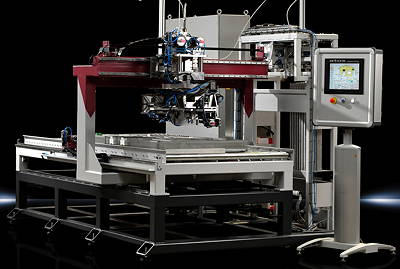- Home » News » World News
German merger could revolutionise panel-building

A merger between two German engineering companies could revolutionise the way that control and switchgear cabinets are designed and built, with much of the process being automated – from the initial circuit design to final assembly of the wiring using robotic machines.
The enclosures giant Rittal has merged with Kiesling Maschinentechnik, which specialises in machinery for automating the assembly of electrical panels. Kiesling is now a member of Friedhelm Loh group, which owns the software engineering company ePlan, as well as Rittal. The terms of the merger have not been disclosed, but it has created a group employing 11,500 people with sales worth around €2.2bn.
Kiesling, which was founded in 1970, specialises in machining centres for assembling enclosures, automated assembly systems for terminal strips, and enclosure test systems. Its machines can perform all of the mechanical processes needed to assemble an enclosure – including drilling, thread cutting and the milling of cut-outs.
Kiesling’s latest development is a robot-assisted wiring machine called Averex that avoids the need to wire mounting plates laboriously by hand. The automated system prepares the wire ends, lays the wires in ducts, and connects them to components, ensuring that all the connections comply with standards and meet safety requirements.
“From the very beginning, Kiesling Maschinentechnik has thrived on innovation,” says Friedhelm Loh, owner and CEO of the Friedhelm Loh Group. “Now that we are linking the company to Rittal and Eplan, we are opening up splendid international growth prospects for it, while adding handling technology to our range of services.”
Rittal says that its customers will benefit from improved productivity along the entire enclosure construction chain, from engineering through to robotic wiring.

Designers will be able to configure their enclosures using Eplan’s software and databases. With Eplan Pro Panel, for example, they can place elements in 3D and generate information on mounting holes automatically. The software determines the optimal wiring distances and the lengths needed for the wires and cables.
The wiring data from the Eplan software, as well as information from the 3D model of the components and their location on the mounting plate, is then passed on to the Kiesling wiring robot via a specially developed interface.
Using this information, the robot will check the construction of the mounting plate, and wire the components automatically. If needed, it can change the sizes and colours of the wires. It uses a tool-changer with six tools for different types of connection, and can handle wires with cross-sections from 0.75–2.5mm2.
Rittal says that the automated machinery will speed up the wiring process considerably, as well as cutting costs.





